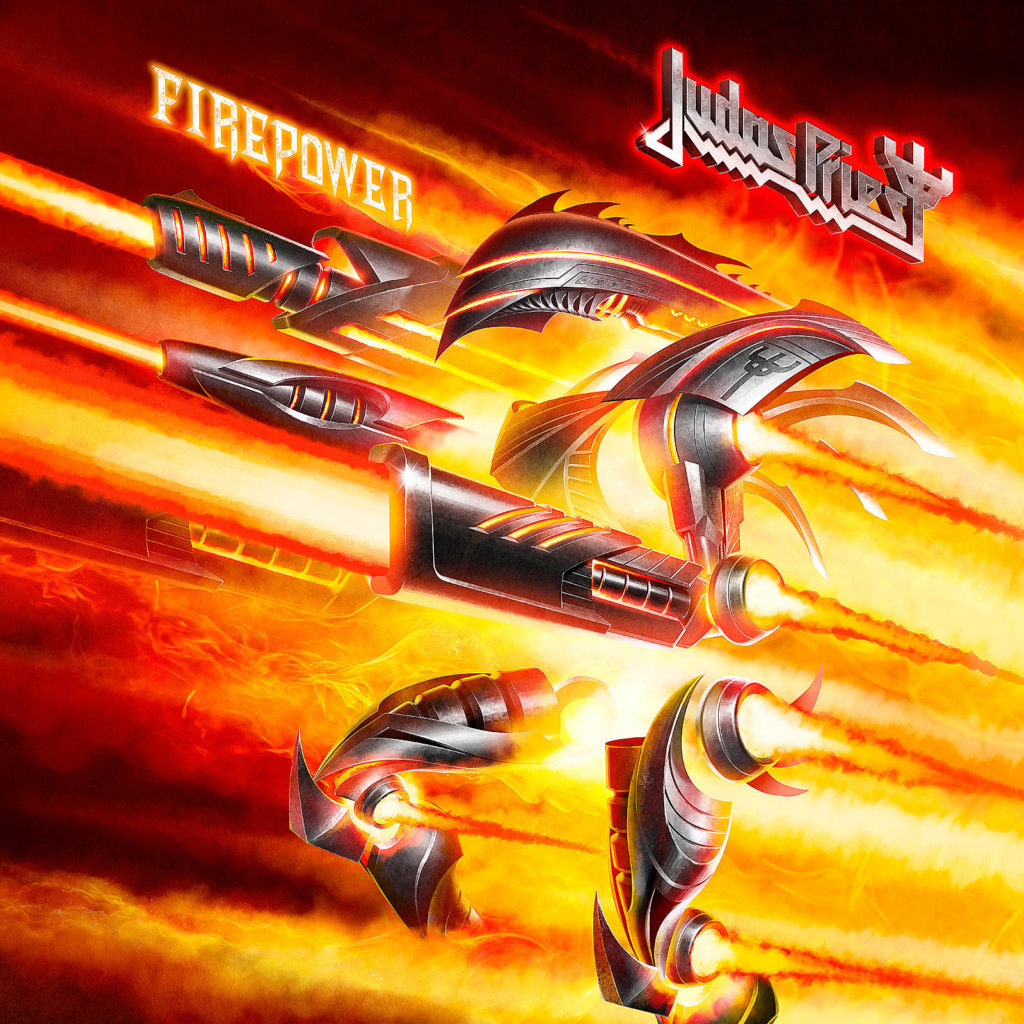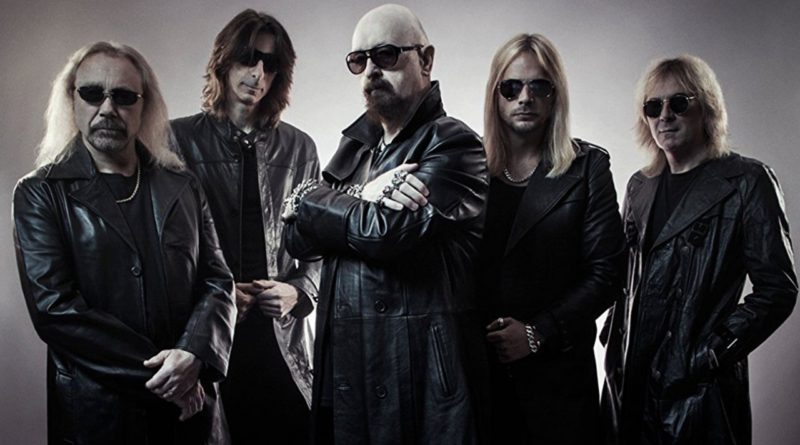Judas Priest — “Firepower”
Following the release of their love-it-or-hate-it 1986 album “Turbo,” Judas Priest, long considered one of the founders of the working man’s heavy metal sound along with their Birmingham brethren Black Sabbath, found themselves in the precarious spot of potentially having to serve two masters.
On one side of the tracks were the denim-clad, hardcore punters who had been with the band since the early days when vocalist Rob Halford first began roaring onto the stage on his trademark Harley Davidson, decked in leather and furiously revving the throttle with one hand while gripping a menacing whip with the other. To them, Priest embodied the essence of heavy metal in “Delivering the Goods,” “The Ripper,” and “Victim of Changes.” Devilishly good.
But thanks to MTV and the more commercial leanings of “Turbo,” the arenas the band was filling in 1986 didn’t strictly consist of 45-year-old, time-grizzled gents flying the heavy metal horns anymore. Standing beside them now were 16-year-old blondes wearing Aquanet, pastel-colored blouses and designer jeans.
The fickle fly-by night crowds left as quickly as they entered, however, and after the lukewarm reception to the band’s follow-up, 1988’s “Ram It Down,” Halford and guitarists K.K. Downing and Glenn Tipton, bassist Ian Hill, and drummer Dave Holland found themselves looking in the rearview mirror as younger, heavier bands such as Metallica and Pantera began flexing their musical muscle in their claims to become the new kings of the heavy metal hill.
It was time for Priest to put up or shut up.
The response? The crushing “Painkiller” album of 1991. It was a return to form and then some, thanks in part the introduction of drummer Scott Travis, who ratcheted up Priest’s backline and gave the band a much-needed shot of electricity.
A scant two years later, however, things took an unexpected turn. Halford left the band for a decade in pursuit of solo projects Fight and the bizarre industrial metal of Two. He eventually returned to Priest in 2003, and the band went on to record “Angel of Retribution” (2005), “Nostradamus” (2008) and “Redeemer of Souls” (2014), that, while valid in their attempts, were barely memorable in their results.
Despite the veiled threat of retirement, Halford promised the band would return for at least on more go-round in 2018 and enlisted the services of producer Tom Allom (who produced “British Steel” through “Rami It Down” from 1979-88) as well as heavy metal’s latest production wizard, Andy Sneap. The result was the band’s latest endeavor, “Firepower.”
And once again, it’s time to answer the bell.
A simple-yet-muscular guitar riff in the opening seconds of the title track clears the path for the fade-in entrance of a classic Halford scream. As if to double down on their message to the fans that they haven’t forgotten what got them here in the first place, during the first solo section, Tipton and Richie Faulkner (who stepped in after K.K. Downing’s retirement in 2011) lock into a twin guitar harmony dripping of “Defenders of the Faith”-era Priest. From there, it’s off to the races.
The mid-tempo and devilish-sounding “Evil Never Dies” is one of the album’s many shining moments. The riff isn’t anything out of the ordinary, per se, but a brief, almost pop-sounding pre-chorus followed by a double-bass manifesto by Travis is an unexpected but brilliant move that brings the track to life. While the lanky long-time skinsmen can sometimes be a bit gratuitous with his footwork, for the most part his work on “Firepower” is a lesson in abstinence. While not as groove-oriented as Holland’s simpler, yet equally-as-effective playing style, Travis proves that when called upon to lay off the second pedal, he can, and does.
“Never The Heroes,” a nod to military veterans who served during the World Wars, is another mean-as-hell grinder, highlighted by Ian Hill’s ever-steady thumping bassline. “Children of the Sun” and “Rising from Ruins” are darker compositions of similar brood but polar opposites lyrically. In “Children,” Halford weaves an ominous, rueful lyrical lamentation of the destruction of Earth by mankind, while “Rising” features the anthemic feel the band became famous for on tracks like “United” from the “British Steel” album or “Take On the World” from the seminal “Hell Bent For Leather” album.
The clean guitar intro of “Traitor’s Gate” quickly gives way to a galloping riff and a rapid-fire, staccato chorus vocal by Halford. The gang vocals behind the guitar solo are clear signatures of Sneap’s influence on the album. The British-born Sneap is known as having resuscitated the career of German metal titans Accept, who used the gang vocal technique to mastery. It was announced recently that Sneap will fill in for Tipton on the band’s upcoming tou. Tipton is suffering from the complications of Parkinson’s Disease and can no long tour full-time with the band.
“No Surrender” is a catchy-as-hell track that should be on perma-spin at radio stations across the country if there was any justice in this world. Follow-up “Lone Wolf” goes dirty, low and slow with its greasy swagger, adding yet another delicious seasoning to the record. “Sea of Red” closes things out in monumental, epic fashion as only Priest can attempt and get away with thanks to lonely, melodic soloing of Tipton and Halford’s emotional vocals.
In short, “Firepower” contains some of the band’s best musical output in decades, bar none. Whether it will take a seat next to “British Steel” or “Screaming for Vengeance” as one of the pre-eminent classic Priest albums of all-time is a question that only time has an answer to.
But as to the here and now, one thing is crystal clear: Judas Priest is back — and with a vengeance.
JUDAS PRIEST
“Firepower”
Sony Music
1. Firepower
2. Lightning Strike
3. Evil Never Dies
4. Never The Heroes
5. Necromancer
6. Children of the Sun
7. Guardians
8. Rising From Ruins
9. Flame Thrower
10. Spectre
11. Traitors Gate
12. No Surrender
13. Lone Wolf
14. Sea of Red


